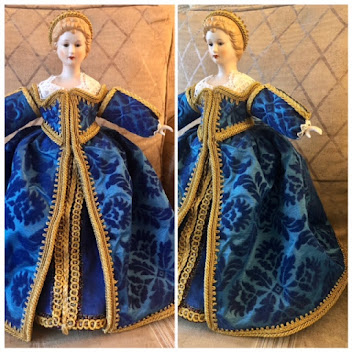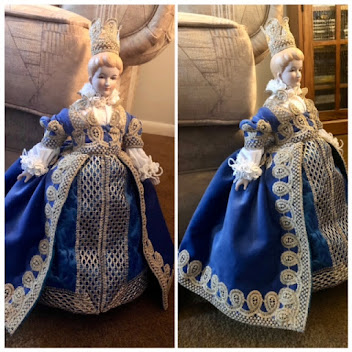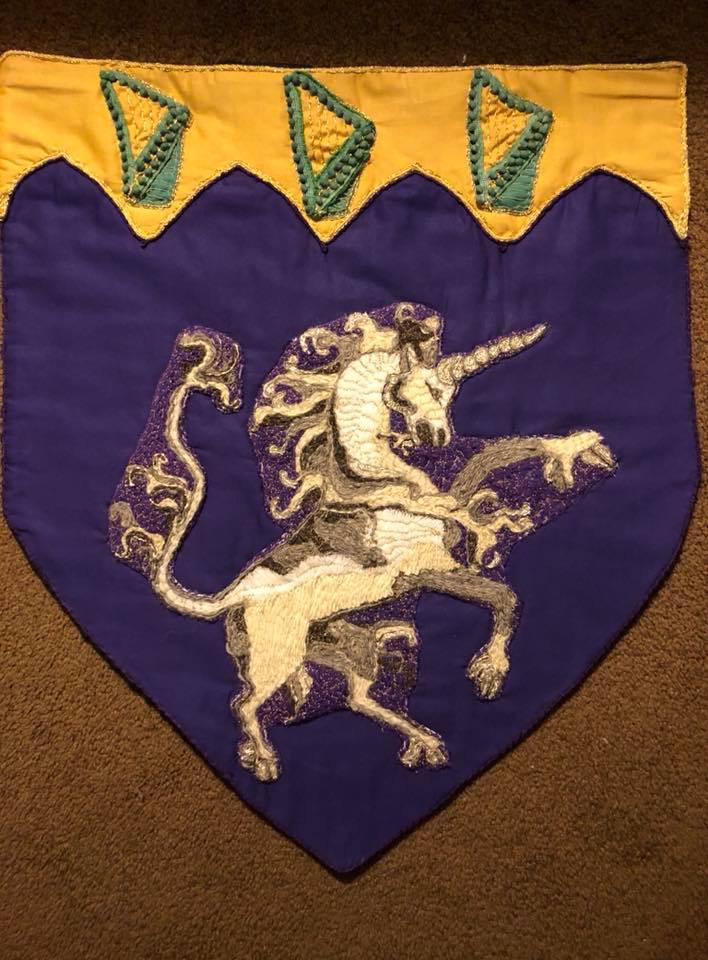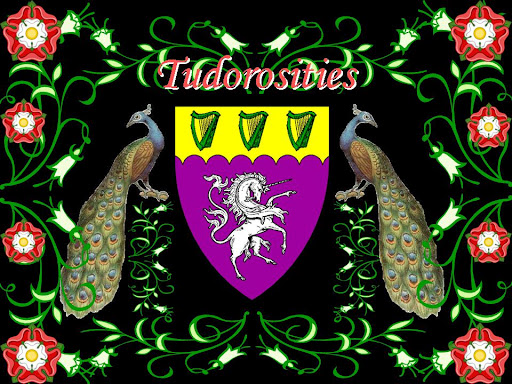Looking at the various different types of embroidery out there. I am focusing on new techniques, new materials, and interesting compositions and design layout for inspiration. And I have come across this wonderful book as a suggestion. This comes from online costuming friends who do various time periods of embroidery.
The Complete Book of Stumpwork embroidery by Jane Nicholas is a really fantastic guide to show how to create stumpwork type of embroidery. Stumpwork is a type of 3 dimensional embroidery that occurs in England from about 1650 throughout the 1700s. It builds upon various techniques and stitches from crewel embroidery. Like the buttonhole and detached buttonhole stitches, goes from there and takes it to a new level with adding different materials focusing on three dimensional aspects and texture.
Not only is the book showing you how to create different types of animals plants and flowers, it also shows you various different designs. From simple small compositions that would make great gifts with embroidering the name of the recipient, to larger compositions that take on a tapestry like feel. There are many projects shown in this book, there's a list of materials needed for each project, and it goes over the techniques on how to create the project step-by-step. Love books laid out well showing you exactly how to make the projects that occur in the book. I really look forward to seeing more work from this author. I found out that this manual is a combination of two different books; one focusing on Medieval flowers and the other one focusing Medieval fauna. These two books were created a paperback format previously they combined them together and put them in a complete manual.
In creating my polychrome embroidered jacket, I worked with various buttonhole stitches to create levels of texture, and build up upon different levels and different stitches. This takes that and really runs with texture and dimensions. I may be using some of the techniques in very small applications on my jacket, stumpwork would be very hard to wear. Due to the three dimensional aspect, it could get snagged often on a garment-based project and destroy the embroidery or garment. So I will most likely use some of the beading techniques or maybe a few berries for interest but I won't be using three-dimensional leaves or other elements because of the snagging problem. So this gives me a lot of information and inspiration to continue with more fascinating needlework!
Embroidering like Mad,
Mairin
Monday, April 21, 2014
Thursday, April 17, 2014
Reworking with Coincidence
Since I will be going away for work in May, been formulating a way to bring my polychrome embroidered waistcoat with me, so I can work on it with downtime in the evenings. Been working on it every evening right now, taking out machine stitching and replacing it with woolen embroidery stitches all the way around all the pattern pieces. It is looking much better and much more organized. I didn't realize when I had bought the trim for the jacket that it matches one of my Elizabethan gowns perfectly! So I am going to wear this dress underneath my jacket and I really believe that it's going to just accent each other beautifully. Showing the photos to see how extremely close the color match shows. Even with the lights and darks of the silk fabrics playing on each other these were never intended to go together, though it's fantastic that they do!
With the Ice Dragon feedback I know the areas of improvement and am reworking techniques and methods now so the projects will be better examples of my work. I am disappointed I will not be there to field questions. Though it's important to share my work with others, I use all the trial and error with my many projects as a learning lesson. For me it's easier to learn from creating, I sometimes make my best discoveries about textiles and fiber arts.
I recently had found out that there was some new literature, not known about on the polychrome embroidered jackets. It was in a series of individual subject booklets called the complete anachronist, published through the SCA. I had gone through the long list of topics, there happens to be many a useful topic. I inherited a handful of these from a friend, and was able to complete my Elizabethan embroidered gloves using one of these little booklets. Now I have one for the my current in progress project. Now I have ordered and received these on various types of embroidery woodworking and other Medieval topics.
So for now figuring out what events I can make an appearance and get my work reworked for arts and science displays in the future. So busy also working on more late period embroidery styles and reading up on better tudor fit and plans to make period patterned linen bodies and woolen kirtle.
Plotting away,
Maureen
Labels:
accessories,
books,
documentation,
elizabethan,
embroidery,
ice dragon
Subscribe to:
Posts (Atom)
Replica 1560's Venetian Italian Fashion Doll

Replica 1560 French Fashion Doll

Tudor Q and A
What is a Tudorosity?
A mashed combination of the words Tudor and Curiosity to create the word Tudorosity. Tudorosities is the plural form and the deffinition is as follows.
Tudorosity- an desire to learn or know anything about the Tudor dynasty associated with years 1405 through 1603.
Most people ask my why I make the Tudor garb ?
I find the clothing of this era not only beautiful but also challenging to sew. There is much more care and purpose put into making garments and wearing garments in the Tudor Era. I love the look of Tudor so much I wanted to explore the way clothes were made back then and the subtle changes in fashion and styles of time.
How did you get started in this interesting hobby?
I started with art first, I love to draw, paint, and sculpt all the traditional fine arts. So being able to draw helps me visualize the looks I want to create in my garb. History has always been a huge interest of mine and I've had a knack for sewing since I was 7 years old. It all started with doll clothes and I learned cross stitch embroidery from my grandmother when I was little. I am self taught sewer, crochet, knitting, embroidery and tatting. My methods are learned from books mainly and there is still so much more to learn.
What is my favorite outfit and why?
It would be like picking a favorite out of one of my future children, its impossible. I love all my gown creations and really like the distinct differences in all the styles clothing I make for the Tudor Era.
Do you make the whole outfit including hat, shoes, and undergarments?
I do have a goal of making a complete Tudor from the skin out. As of right now I make 90% of my gowns and accessories. The shoes and stockings, are bought online and the petticoats are a close reproduction but not made by me. .
How long does it take to make a gown?
It all depends on the type of gown. The making relies on the time period and class of the design. Generally if I work on it 8 hours a day on a sewing machine it will take 3 days to get the basics and another 5 days to do finish hand-sewing details and beading. So a week to a week and a half if working on it steady for that amount of time. I work a full-time job so it does take longer than a week to complete. I put over 40-100 hours per outfit depending on its complexity, its like its own full time job of sorts.
Do you make renaissance clothing for sale or custom orders?
No, due to new employment and changes in my lifestyle. Unfortunately, I have no time to support sewing for others. Though I recommend sewing lessons for those adventurous few. There are many fine folks who make and sell historical clothing. I suggest guidance with sew from many fine historical enthusiastic costumers out on the internet.
How long have you been making these elaborate costumes?
I have been in the Society of Creative Anachronism coming up on my 18th year. Active since 2004 working at demonstrations and volunteering when I could between working and other life's distractions. I really concentrated on Tudor sewing in 2007 and worked with patterns to learn proper fabrics, techniques, fit, and silhouette. I really enjoy the eras transition from a medieval form fitting layered cotterdie to the boned Tudor kirtle and then to structured Elizabethan clothing.
A mashed combination of the words Tudor and Curiosity to create the word Tudorosity. Tudorosities is the plural form and the deffinition is as follows.
Tudorosity- an desire to learn or know anything about the Tudor dynasty associated with years 1405 through 1603.
Most people ask my why I make the Tudor garb ?
I find the clothing of this era not only beautiful but also challenging to sew. There is much more care and purpose put into making garments and wearing garments in the Tudor Era. I love the look of Tudor so much I wanted to explore the way clothes were made back then and the subtle changes in fashion and styles of time.
How did you get started in this interesting hobby?
I started with art first, I love to draw, paint, and sculpt all the traditional fine arts. So being able to draw helps me visualize the looks I want to create in my garb. History has always been a huge interest of mine and I've had a knack for sewing since I was 7 years old. It all started with doll clothes and I learned cross stitch embroidery from my grandmother when I was little. I am self taught sewer, crochet, knitting, embroidery and tatting. My methods are learned from books mainly and there is still so much more to learn.
What is my favorite outfit and why?
It would be like picking a favorite out of one of my future children, its impossible. I love all my gown creations and really like the distinct differences in all the styles clothing I make for the Tudor Era.
Do you make the whole outfit including hat, shoes, and undergarments?
I do have a goal of making a complete Tudor from the skin out. As of right now I make 90% of my gowns and accessories. The shoes and stockings, are bought online and the petticoats are a close reproduction but not made by me. .
How long does it take to make a gown?
It all depends on the type of gown. The making relies on the time period and class of the design. Generally if I work on it 8 hours a day on a sewing machine it will take 3 days to get the basics and another 5 days to do finish hand-sewing details and beading. So a week to a week and a half if working on it steady for that amount of time. I work a full-time job so it does take longer than a week to complete. I put over 40-100 hours per outfit depending on its complexity, its like its own full time job of sorts.
Do you make renaissance clothing for sale or custom orders?
No, due to new employment and changes in my lifestyle. Unfortunately, I have no time to support sewing for others. Though I recommend sewing lessons for those adventurous few. There are many fine folks who make and sell historical clothing. I suggest guidance with sew from many fine historical enthusiastic costumers out on the internet.
How long have you been making these elaborate costumes?
I have been in the Society of Creative Anachronism coming up on my 18th year. Active since 2004 working at demonstrations and volunteering when I could between working and other life's distractions. I really concentrated on Tudor sewing in 2007 and worked with patterns to learn proper fabrics, techniques, fit, and silhouette. I really enjoy the eras transition from a medieval form fitting layered cotterdie to the boned Tudor kirtle and then to structured Elizabethan clothing.
Replica 1490 Milan Italian Fashion Doll

Based on art by Giovanni Ambrogio
O’Kealy Heraldry

